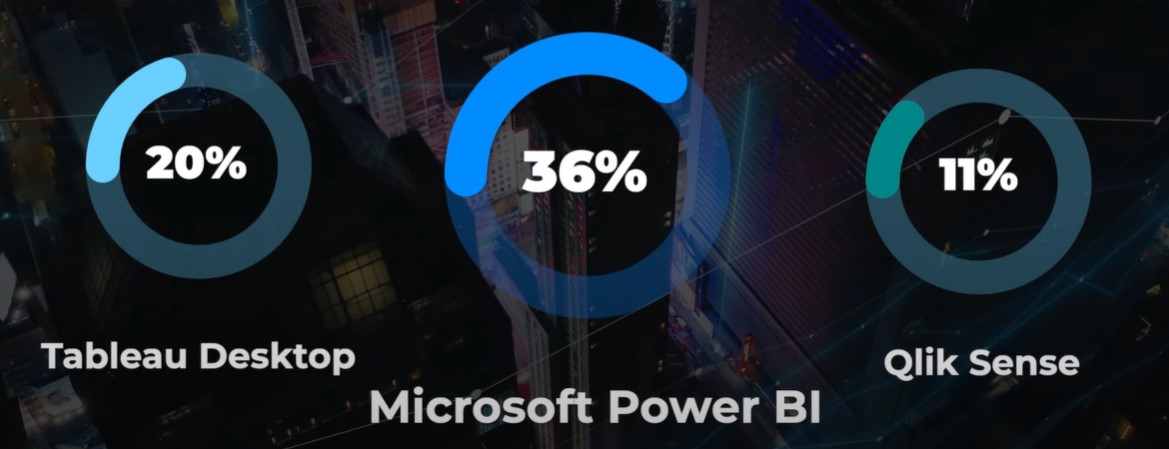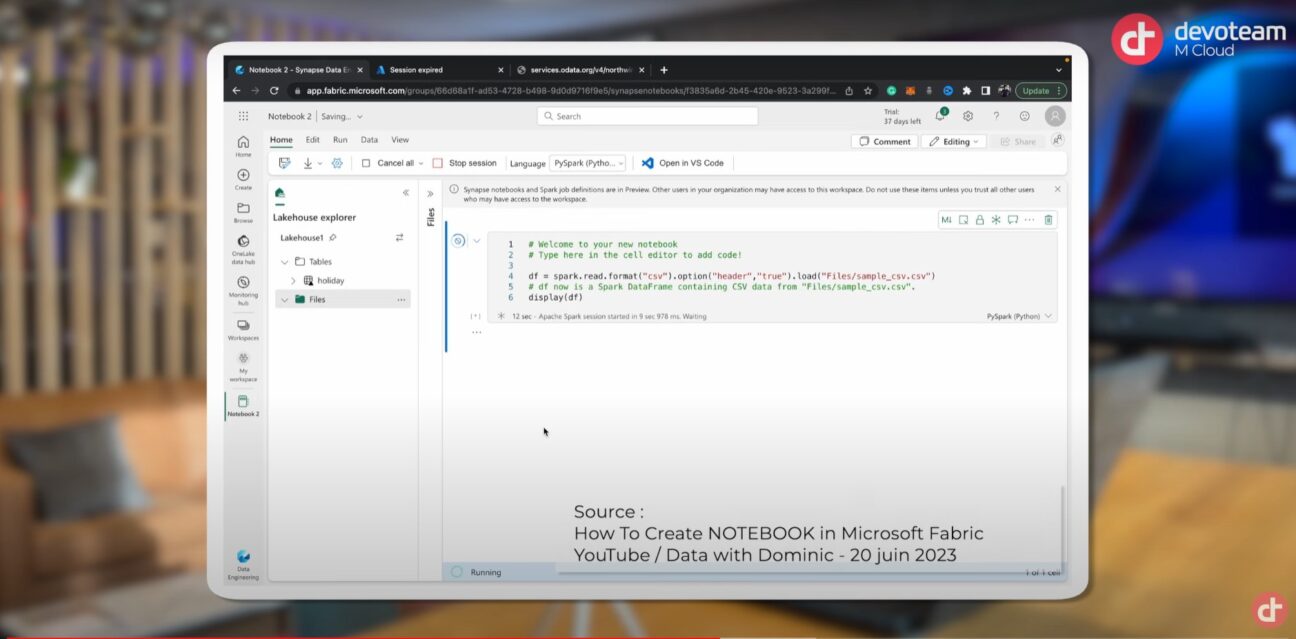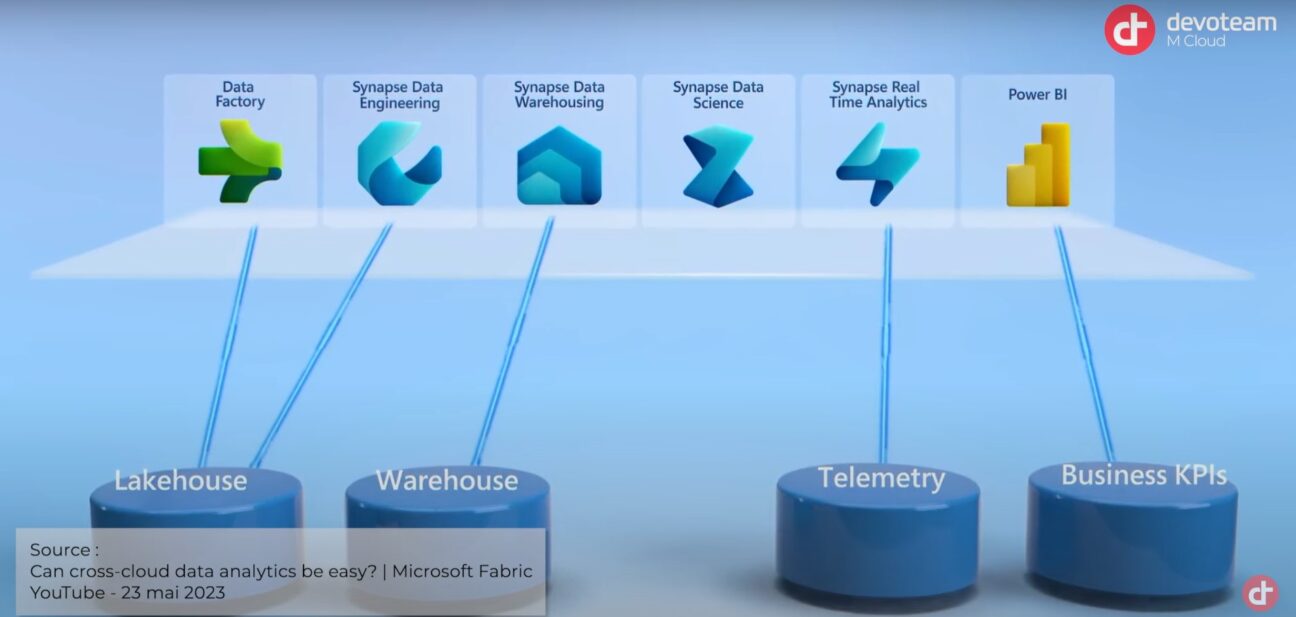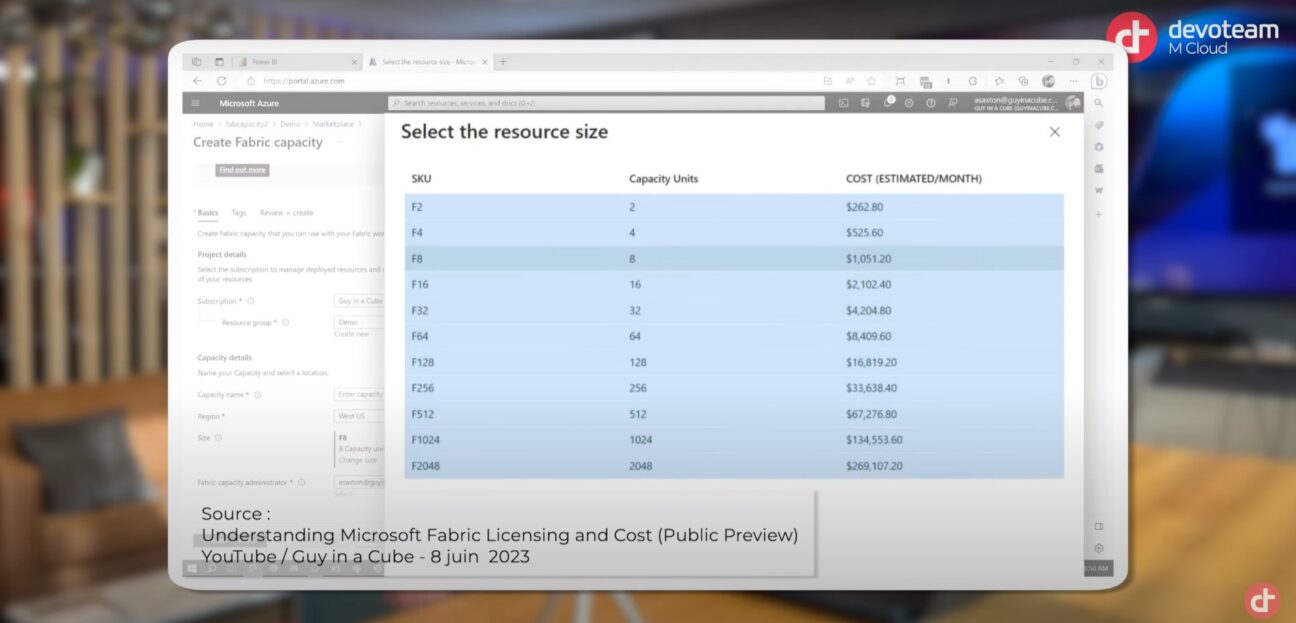Introduction
In the ever-evolving world of technology, efficient data management is crucial for business success. Over the past few years, Microsoft has made its mark in the Business Intelligence (BI) market with Power BI. Recently, at the May Build Microsoft event, the company unveiled its latest data innovation: Microsoft Fabric. Dimitri Cabaud, our Squad Leader Data at Devoteam M Cloud, breaks down this new revolution in data analytics, explaining its impact on the market, the key features it offers, and its pricing model.
Microsoft Fabric: A revolution in the world of Data
A paradigm shift
Until now, Microsoft primarily adopted a Platform as a Service (PaaS) architecture for its data services such as Azure SQL, Data Factory, or Azure Synapse Analytics, to name a few. However, with Microsoft Fabric, the company introduces a fully Software as a Service (SaaS) solution, marking a significant turning point in its strategy. While a Fabric capacity can be deployed within the Azure environment, its usage occurs within the Power BI application. This clever approach by Microsoft allows millions of users to easily access Fabric services with just a few clicks.
Market domination in BI
The integration of Fabric with Power BI gives Microsoft a clear advantage in the BI market. In 2021, Microsoft already held an impressive market share of over 36%, according to TrustRadius, and this upward trend has continued over the past two years. The shift from Tableau to Power BI is becoming a reality, and by 2023, according to Gartner, Microsoft is expected to significantly outperform its competitors.

A world of self-service analytics
Fabric introduces a major shift from a self-service BI model to a self-service Analytics model. This evolution aligns perfectly with the Data Mesh paradigm of decentralising data platforms: each business entity can now easily and securely collect, process, and expose its data within the organisation.
Versatile Capabilities of Microsoft Fabric
Adaptable to all contexts
What makes Fabric unique is its ability to adapt to various organisational contexts and client maturity levels. It offers workspaces, capacities (a feature already present in Power BI), and domains to simplify workspace management.

A consolidation of services
Fabric consolidates over a dozen Azure services into a single integrated solution, going beyond the services already available on Azure. Notable inclusions are Azure Synapse Analytics, Azure Data Factory, Azure Machine Learning, Azure Data Lake, Azure SQL, Azure Data Explorer, Azure Stream Analytics, and many more.
Lake House and Serverless Data Warehouse
Fabric offers a completely serverless Data Warehouse built on top of a Data Lake. Data Analysts can now work with their data using T-SQL while developing functions and stored procedures. Fabric’s Lakehouse leverages the best features of both Data Warehouse and Data Lake using Microsoft’s Delta format.
Innovative features
Fabric provides an impressive range of features. It includes notebooks that can be developed on a local IDE using Visual Studio Code, the ability to run them on Spark clusters, the One Lake File Explorer, a tool that simplifies access to data stored on the Data Lake from your workstation, Shortcuts to avoid data replication, and more.


Ease of use and pricing model
Economical and simple
Microsoft has simplified the Fabric pricing model, offering a pay-as-you-go model that eventually enables auto-pause and auto-scaling, or a capacity reservation model.

There are 11 capacity sizes, with compute power doubling per minute with each size increase. This transparent approach makes cost estimation for businesses easier, eliminating the complexity of disparate pricing models, as was the case on Azure.

Impressive performance
Fabric promises impressive performance with instances starting in less than 30 seconds and the ability to turn them off and on almost instantly. With Direct Lake Connection, Power BI provides a direct connection to Data Lake data with incredibly low latency, ideal for querying large volumes of data.
Conclusion
In summary, Microsoft Fabric represents a major advancement in data analytics by offering a comprehensive and integrated solution accessible to data engineers, data scientists, and data analysts. With a transparent pricing model and impressive performance, Fabric is set to be a key player in the data analytics market. While the official General Availability date is not yet scheduled, it is expected to begin in early 2024 and promises to open exciting new opportunities for businesses.